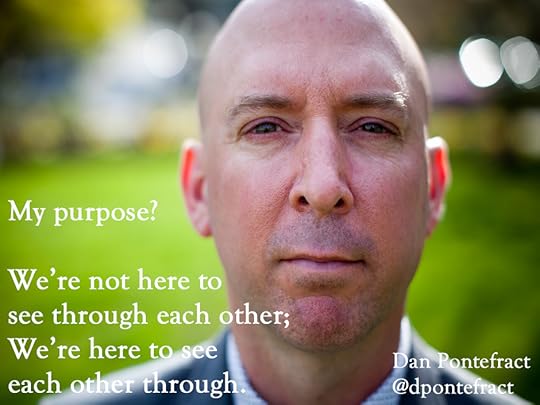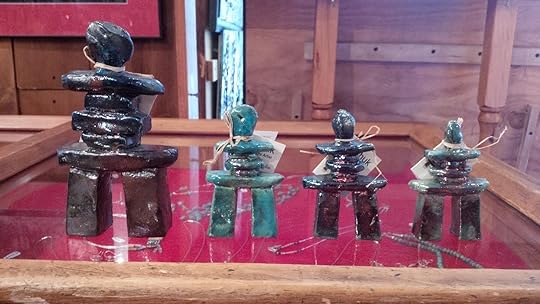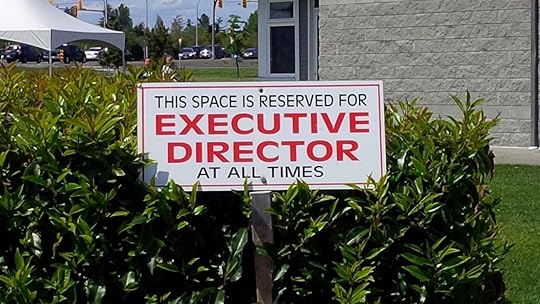Dan Pontefract's Blog, page 40
May 28, 2014
A Twitter Conversation With Myself About Culture and Cetaceans
 I’ve always been an admirer of cetaceans. They are, quite possibly, my favourite parts of nature.
I’ve always been an admirer of cetaceans. They are, quite possibly, my favourite parts of nature.
The problem I have, however, rests not with the cetaceans but with the humans who capture them for entertainment purposes.
I had another revelation. Perhaps there is a metaphorical link between the captured and caged cetaceans and employees in an organization who aren’t listened to, or asked for their opinion … on anything. It’s a metaphor linked to culture.
I proceeded to have a Twitter conversation with myself. Here’s what I tweeted:
Cetaceans confined to an aquarium is akin to the millions of employees unable to contribute their ideas for an organization's well-being.
— Dan Pontefract (@dpontefract) May 27, 2014
Cetaceans confined to an aquarium is akin to the millions of employees unable to contribute their ideas for an organization's well-being.
— Dan Pontefract (@dpontefract) May 27, 2014
Free the whales. Listen to your people.
— Dan Pontefract (@dpontefract) May 27, 2014
Culture can't be manufactured within glass walls. You can't buy it at a gift shop. The pod swims the ocean together creating harmony as one.
— Dan Pontefract (@dpontefract) May 27, 2014
SeaWorld? How about SeeWorld. Reality bites.
— Dan Pontefract (@dpontefract) May 27, 2014
No one ever asked Ms. Nootka. No one ever said, "Hey Tilikum, what do you think?" Caged cetaceans … a metaphor to consider.
— Dan Pontefract (@dpontefract) May 27, 2014
I’ll come back to this metaphor. So far, it’s shifting toward a new form of laminar flow.
Dan's Related Posts:Flat Army Graphics on SlideshareMy PurposeIn 2014, I Will …Maybe We Should Be More Like a Fridge at WorkThe First Step To Improving Employee Engagement Is To Connect With Your Team
May 26, 2014
Internet Activities Do NOT Affect Adolescence Development
 Depending on the scope and topic of a keynote address I deliver, there is a point in the talk where I might tell the story about our three young goats, and why Denise and I are coaching them to publicly blog.
Depending on the scope and topic of a keynote address I deliver, there is a point in the talk where I might tell the story about our three young goats, and why Denise and I are coaching them to publicly blog.
I even wrote a post about it entitled, “Our Three Young Children Blog … Here’s Why“.
An article by Kathryn L. Mills entitled “Effects of Internet use on the adolescent brain: despite popular claims, experimental evidence remains scarce” to be published in the forthcoming edition of Science and Society suggests the fear is pure blatherskite. (malarkey, if you prefer)
Mills states:
Current evidence suggests that typical Internet activities do not impair social development during adolescence.
That sums it up nicely in fact.
The article cites fifteen different studies — from changes to the brain, cognition, sedentary concerns and relationship to musical-training — but more importantly she researched and analyzed 134 published studies on adolescent brains and moderate or typical Internet use. Her findings effectively debunks what is mostly prevalent in society today.
That is, parents, educators, and adults alike believe the internet is one big distraction and is affecting brain development.
This thing called the world wide web is negatively affecting the brains of our up and coming generation. (well, that’s what we adults think)
Indeed, in their How Teens Do Research in the Digital World report, where 2,462 middle and high school teachers currently teaching in the U.S., Puerto Rico and the U.S. Virgin Islands provided insights and opinions, Pew Research stated:
87% of teachers indicated the internet was creating an “easily distracted generation with short attention spans”
64% say today’s digital technologies “do more to distract students than to help them academically”
 Whether these teachers are followers of Oxford University neuroscientist Susan Greenfield remains unknown. Baroness Greenfield is one of the leading opponents to increased screen time for adolescents. She has coined the term, “Mind Change” — paying homage to a different calamity, climate change, perhaps — indicating the internet isn’t exactly bringing the best out in us, adolescents included.
Whether these teachers are followers of Oxford University neuroscientist Susan Greenfield remains unknown. Baroness Greenfield is one of the leading opponents to increased screen time for adolescents. She has coined the term, “Mind Change” — paying homage to a different calamity, climate change, perhaps — indicating the internet isn’t exactly bringing the best out in us, adolescents included.
As Professor of Synaptic Pharmacology at Oxford University, Susan leads a team investigating the physical basis of the mind and its implications for our understanding of human behaviour, work and society. I’m sure she knows a thing or two, but Mills’ exhaustive research and provocative debunking is at the very least important to understand.
Mills — a at the Institute of Cognitive Neuroscience, University College London — concludes her piece with the following:
In the 25 years since the World Wide Web was invented, our way of interacting with each other and our collective history has changed. There is currently no evidence to suggest that Internet use has or has not had a profound effect on brain development.
People have openly questioned me after a keynote, asking why we’d ever let a kindergarten child write a blog and interact online.
As educators (and as parents) we believe the internet is as important an asset as the physical dictionary, encyclopedia and reference books were when we were growing up. Those were our examples of screen time when we were adolescents in the 70′s and 80′s.
 We mandate proper screen time allotment, which often is overlooked by the naysayers. Our children play, create art, build with Keva Planks, participate in sport and music, and perform in plays and operas.
We mandate proper screen time allotment, which often is overlooked by the naysayers. Our children play, create art, build with Keva Planks, participate in sport and music, and perform in plays and operas.
Our job as educators (and parents) is to teach digital citizenship. Screen time may in fact change their brain, but we’d rather be in front of that opportunity, coaching and mentoring along the way such that they understand responsible use and proper etiquette.
After all, it’s not as though the internet is going away anytime soon.
Dan's Related Posts:Our Three Young Children Blog … Here’s WhyLet’s N-Screen the ClassroomThe Fallacy of Digital NativesIntroducing the Digital Learning QuadrantsAre We Addicted to the Notification of Notifications?
May 23, 2014
Q&A on the Future of Social, Mobile and eLearning
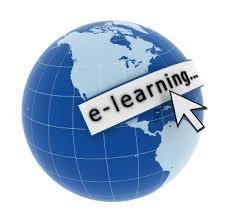 I was asked to comment on a few questions related to eLearning, social learning, etc. for an upcoming publication.
I was asked to comment on a few questions related to eLearning, social learning, etc. for an upcoming publication.
Here are the questions and my unedited responses:
What does an organization without social learning look like? What COULD it look like?
The water cooler has been both a figurative and literal location of exchange. So too has the break room, the lunch room, the elevator … heck, even smokers alley outside the building. Social learning has always been a part of organizations. It’s the exchange of knowledge, intelligence, ideas and feedback through non-formal means. The ‘new’ social learning — where the utilization of collaborative technologies aid and abet the exchange — is a new must. Why prevent it? Why stop it? An organization without social learning is an organization without its soul … without its culture. It’s a draconian stance to take, one that ensures disengagement will flourish (an oxymoron, I know) and learning will be trapped in a classroom and LMS forever.
How would offering social learning benefit employee engagement?
To make a peanut butter and jelly sandwich, one first must start with two pieces of bread. Let’s refer to this as formal learning. The peanut butter makes the bread stick together, something I like to refer to as informal learning. (eg. Coaching, mentoring, job shadowing, books, etc.) But it’s the sweet irony of the jelly that makes the sandwich complete. That sweetness comes in the form of social learning, and it’s necessary if one wants an engaged organization and improved operating culture. Social learning not only connects and unites one another in the exchange of knowledge, content and ideas — through collaborative technologies — it breaks down the barriers of hierarchy. Imagine a Senior Vice-President who begins a weekly internal blog, discussing important ‘executive’ topics with her team or the organization, while using it as a platform to solicit feedback and ideas on said topics. How is that not a good way in which to both learn and increase employee engagement at the same time?
Is mobile or social the next hot thing for organizations to offer employees as part of a learning program? Why?
I read with disdain a recent report from Proskauer entitled “Social Media in the Workplace Global Study”. They found 36% of employers actively block access to such external social media sites, compared to 29% in 2012 and 43% of businesses permit all of their employees to access social media sites, which is actually a fall of 10%. This is not a good trend. Social, mobile, wearables, and whatever is next are part of our human condition. We invent to survive. We ideate to thrive. We create to exist. Everything is the next hot thing for organizations to offer employees as part of a learning program. It’s not limited to social or mobile. A true learning organization should be listening to its employees (as well as industry) to determine how these new forms of technologies (and ideas) can assist the employee to become better engaged, better educated to in turn perform better in their role for purposes of the customer they serve.
What does the future of eLearning look like?
I’ve always loathed the term eLearning. Something that is ‘electronic’ reminds me of my father and his electrical engineering days. His father made him become an engineer. Many people are forced to take eLearning. If I could change anything, it would be to drop the ‘e’ of eLearning and call it what it really should purport to be offering: interactive learning. Far too many eLearning offerings remain ‘click next’ rote memory exercises. I’d like to see eLearning become 10-30 minute interactive learning opportunities that truly demonstrate engaging, simulated and emotionally tied interactions with the learner. It too should be (somehow) tied to social learning. There is a time and place for individualized interactive learning — don’t get me wrong — but learning is also a shared experience, and by not having the tie-in with social learning (through discussion forums, micro-blog exchanges, video shares, etc.) we’re losing out on an important possibility to further enhance the learning experience itself.
Dan's Related Posts:Employee Access to Social Media in the Workplace DecreasesSocial Media is not Social LearningThe Educational TLearning by OsmosisThe Social C-Suite
May 20, 2014
Talent Development Isn’t Just About Training
Back in 2001, Britain’s Royal Mail — that venerable institution of postal delivery throughout the United Kingdom, originally conceived and put into service by Charles I in 1635 — decided to change its name to Consignia.
Consignia.
The Chief Executive Officer at the time was John Roberts. He publicly stated that “the new name describes the full scope of what the post office does in a way that the words post and office cannot.”
Consignia.
You can’t make this stuff up.
Needless to say, Royal Mail was resurrected from the lost mail bag name a year later.
That’s an example of a name change gone terribly awry.
Recently, however, another name change has sparked a relative fury for professionals in the learning, talent and HR space.
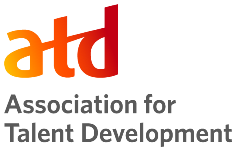 The ASTD — American Society for Training and Development — recently announced it was changing its name from ASTD to ATD, or Association for Talent Development.
The ASTD — American Society for Training and Development — recently announced it was changing its name from ASTD to ATD, or Association for Talent Development.
To be clear, this is not an example of Consignia or Royal Mail. In fact, this change is rather refreshing. One might say it’s needed.
ATD got its start in 1943 as the American Society of Training Directors. As Wikipedia suggests, “The organization began in New Orleans during a training committee meeting of the American Petroleum Institute in 1942. The following year, a group of 15 “training men” met for the first board meeting of the American Society of Training Directors.”
From there, it morphed into the American Society of Training and Development and it now possesses thousands of members in more than 100 countries. In the US alone, there are over 120 chapters. There are 26 global networks in other countries as well. In a nutshell, it’s a large, international and community-driven organization supporting the professionals who aspire to help all facets of professional development inside profit and not-for-profit organizations.
I’ve never liked the term or the acronym ASTD. I felt it did not do justice to what this organization does, and will continue doing for professionals and workers in today’s organizations.
The Association for Talent Development (ATD) is a far superior and clearer name than ASTD or American Society for Training and Development. Aside from the obvious — which is dropping the myopic view of an American-only association, which it never was — the graduation from ‘training and development’ to ‘talent development’ is necessary.
Talent development is not solely about training. Furthermore, when one is developing, delivering or designing ‘training’, I wouldn’t subscribe to it being the only form of talent development.
Talent development is much broader than training.
A training and development only mindset is akin to believing workers in today’s organizations only learn inside of a classroom or a learning management system. It’s as though there is only one form of pie at my local bakery. I may love pecan pie, but from time to time, I love a sky-high lemon meringue pie or the sweet crumble of an apple pie.
Whether via the Pervasive Learning model from Flat Army or through the myriad different ways workers have proven that learning is part formal, informal and social, it all comes back to talent.
Talent is developed inside and outside of ‘training and development’. It comes in the form of coaching, mentoring, job shadowing, wiki’s, blogs, rotations, lectures, books, articles, job aids, leadership models … the list literally goes on and on.
I want an array of pies at the bakery. I believe talent development is that bakery. I believe ‘training and development’ is one type of pie, but the ATD is a bakery that provides all sorts of pies for us to enjoy.
In 1924, a company by the name of Computing Tabulating Recording Corporation decided it would be a good time to rename itself. Leaders thought the name was limiting. Leaders believed they had to expand the definition of the company to include a more international flavour. They also believed they were a one-pie bakery.
What did the Computing Tabulating Recording Corporation change its name to?
Ninety years later, you may be more familiar with the name International Business Machines or IBM.
ATD – not your one-pie talent development bakery.
Dan's Related Posts:Dear C-Suite: We Don’t Do Training AnymoreLearning by OsmosisWhy You Must Define the So-What of LearningCoaching Should Be An Expectation Of All Connected LeadersMy Network is my Net Worth – Part II
May 16, 2014
My Purpose
Dan's Related Posts:Can Humanism Replace Capitalism?Amidst Uncertainty the Inuksuk SurfacesKudos Jacques Godin, an Engaged Air Canada EmployeeWho Am I? Who I Am.Lessons Learned From a First Time Author
May 14, 2014
When Life Flashes Before Your Eyes
Today was an interesting day. It was going very well, until I began the journey home.
It didn’t feel right from the beginning.
From the hotel entrance, I got into the truck and headed for Toronto’s Pearson Airport en route to Victoria, BC. I thought to myself, “Did he just slur the word luggage?”
I looked past it. I chalked it up to his accent.
I pulled out my iPad and began reading, as I always do when making the 30-minute journey from downtown Toronto to the airport. I’ve done the trip so many times, there is nothing more to see. I prefer reading, via the iPad.
The head bobbing nearly concussed me as we literally stuttered toward the Gardiner Expressway, but I overlooked it at first.
Once on the Expressway, and heading for Highway 427, I became concerned.
“Is he swerving?” I asked myself.
I asked the driver,
“Are you tired? Have you been drinking?”
He replied, “No, I’m just tired. I need a coffee.”
By the time we hit Highway 427 , I was in full-on DEFCON 5 mode. He was asleep at the wheel, and we were headed for the concrete wall.
“WAKE UP!“, I screamed.
Thankfully, someone was looking out for me. (again)
He awoke, managed to swear, and somehow avoided the wall and the car in front of us. The brakes were slammed — and for whatever reason — the car came to a complete stop in the emergency lane, unscathed.
Do you know how difficult it is to hail a cab on the side of a highway?
Do you know what it feels like to put your life in the hands of a drunk driver?
Nevertheless, I was alive. (again)
When life flashes before your eyes, one is instantly reminded of mortality, love and unconquered dreams.
As an 18 year-old, I once was ditched from a white water river raft, sucked into an underwater Grade 6 cyclone that trapped me for what felt like hours. Imagine an underwater washing machine where your body is magnetized to the rim — the lid is closed — and there is no way to get out. It eventually spit me back up to the surface, where friends took over from there, saving my life.
As a 26 year-old, a driver lost control of his car around a stretch of road in Vancouver while speeding at 80 km/h and was headed directly for the front of my trusty Saturn. With no time to think, I somehow managed to veer ever so slightly to the right. It saved three lives in the Saturn (including my own) but the entire driver-side of the trusty Saturn disappeared. The polyethylene dent-resistant plastic body panels of the trusty Saturn were no more. It was weird to see a car so naked, but it felt good to be alive. (again)
I now sit in the friendly confines of the Air Canada lounge in Toronto. Naturally, I’ve been reflecting.
Have I done everything possible to be the best human being possible? Have I conquered all of those dreams?
No, I haven’t.
But I will remedy the oversight, effective immediately.
Please, don’t drink and drive.
Dan's Related Posts:Omni Hotels & Resorts in Dallas Demonstrate Great Customer ServiceTake a Chance on YouWhat I Learned From My Daughter About Decision MakingIFA Review of “How To Be Interesting” While Sitting Beside a Drunk on an…
Amidst Uncertainty the Inuksuk Surfaces
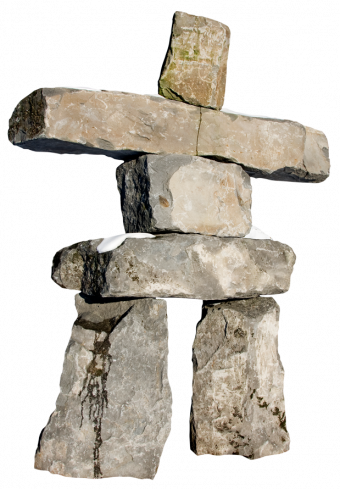 I can recall with fond memory many of the class projects I worked on while attending elementary school. The exploding volcano might have packed too much of a punch for poor Mrs. Guyatt though. I’ve never seen grey hair instantly turn white like that.
I can recall with fond memory many of the class projects I worked on while attending elementary school. The exploding volcano might have packed too much of a punch for poor Mrs. Guyatt though. I’ve never seen grey hair instantly turn white like that.
Perhaps my favourite one had me researching and writing a speech about Canada’s Inuit. The politically incorrect book titled, Eskimos in the North served as my guide. Wikipedia was two decades away so physical trips to the community library were necessary to peruse and research from … dammit, what were they called, oh right … encyclopedias.
I loved studying about the Inuit because it was during my preparations for my speech when I was introduced to the Inuksuk. (pronounced in-uk-shuk)
From one of my favourite galleries and art shops in Vancouver via Granville Island comes a little more explanation about the Inuksuk:
Inuksuk, the singular of inuksuit, means “in the likeness of a human” in the Inuit language. They are monuments made of unworked stones that are used by the Inuit for communication and survival. The traditional meaning of the inuksuk is “Someone was here” or “You are on the right path.“
In other words, inuksuk (in the Inuktitut language) means “to act in the capacity of a human.”
It’s quite literally an extension of the word inuk which is defined as “a human being.”
Life is an uncertainty. One never really knows what may be thrown at you. Cancer. Job termination. Flooding. The paradoxes of a rich life can overflow, out-duel and even dampen the spirit in us all.
I wear both my heart and head on my sleeves at all times. I don’t know how to be any different. It can get me into trouble, particularly with those who fail to see the bigger picture. This has happened, happens and is happening in my place of employment. I suspect it will always occur, rightly or wrongly. I empathize, sympathize and can understand someone’s differing point of view but a myopic mindset isn’t something I’ve ever been comfortable with.
I’ve never been in it for ‘the money’.
I’ve never needed riches. My riches come in the form of family, friends, fun and freedom. It’s my frabjous life!
I simply seek a life and a career with purpose. Getting paid is important but millions of dollars is not my goal.
In times of trouble or concern, however, I look to the Inuksuks I’ve left scattered across the lands of my life and career. Now is such a time where I recall the Inuksuk.
I have been here before. The Inuksuk reminds me.
I have felt this experience before. The Inuksuk reminds me.
I am on the right path. The Inuksuk reminds me.
I am acting in the capacity of a human, although my foes are not. The Inuksuk reminds me.
I am a human being.
The Inuksuk reminds me.
Last week I had the fortune of speaking to a group of up-and-coming leaders in Ottawa, the capital city of Canada. I really enjoyed my time with them, however brief it was. The day before, I was being fed to the wolves in a situation that forced me to pause, ponder and reflect my overarching purpose. I sought out my Inuksuk.
As luck had it, when I was gallivanting around Parliament Hill the bells of the Peace Tower went off at 6pm. It was an audible sign. Snap out of it Dan, go find your Inuksuk.
A block away from Parliament Hill in Ottawa was an art gallery.
Naturally, I bought four Inuksuks. One for Denise and I … and one for each of our children. The Inuksuk is a beacon. Over time, I hope the goats learn the importance of the Inuksuk.
They will receive the Inuksuk lesson (and their first Inuksuk piece of art) this coming Christmas, for it’s an important lesson.
I am a human being. The Inuksuk reminds me.
Always.
Dan's Related Posts:We Are All BostonOur Three Young Children Blog … Here’s WhyFor every fall there is a spring in our stepCan Humanism Replace Capitalism?Goodbye Team of Five Years
May 11, 2014
Hierarchy for the Sake of Hierarchy is Simply Being Gutless
The family and I were ‘out and about’ on a lovely, sun drenched Mother’s Day this past weekend. Denise was celebrating her 11th Mother’s Day but if you do the math properly, she’s been a mom now to the three goats for a cumulative total of 27 years.
You’ll figure it out in a moment.
After a lovely morning replete with gifts for mom, flowers, brunch, cards and of course three blog posts from each of the goats paying homage to their mother (Claire’s post, Cole’s post and Cate’s post) we decided to venture out. We fell upon a somewhat makeshift carnival outfitted with rides, games and fatty desserts like donuts, candy floss and snow cones.
As we were leaving, the goats went to the loo with mom while I went back to our truck, parked in the Community Center parking lot.
In said parking lot, adjacent the ‘Mad Tea Cup’ ride was a perfect example of ‘Hierarchy for the Sake of Hierarchy‘. Witness Exhibit A:
Those that work at a Community Center are noble people. The service they provide the community itself is stellar. Community Centers — at least in Canada — have long been a place of togetherness, even collaborative spirit.
Does the Executive Director of this particular (but nameless) Community Center need to have such a sign adorn the parking lot? What message does it send to those in the community? What message (and reinforced culture) does it send to the Executive Director’s team?
Do you care for irony?
The parking lot consists of over one hundred spots. Even if the Executive Director had to park in the one furthest away from the Community Center, he/she would be adding a total of three minutes to his/her daily commute. (That’s in total, back and forth between the building and the parking spot in no-man’s land.)
Of all organizations on the planet, the last place I thought I’d see a sign denoting a flaunting and arrogant display of hierarchy (for the sake of hierarchy) would be at a community center.
I mean, c’mon … it has the word community in it.
It’s supposed to be a center full of community, isn’t it?
Throughout my career and life, I’ve witnessed such a sign (and displays of hierarchy) in the usual spots such as the high school parking lot, the industrial park parking lot and the dentist office parking lot. There are plenty more spots out there. I’m certain you’ve seen it in action as well.
In this the era of disengaged organizations, must we publicly display ‘hierarchy for the sake of hierarchy‘ or might we remember we’re all human, with legs, and are each capable of walking a few meters to get in the front door of our workplace?
Yes, you may be the Executive Director of this particular Community Center … but judging from the fact the sign still exists, the lack of respect you show your team members and the community itself demonstrates something so familiar, it’s rampant in our organizations today:
You possess both a lack of self-confidence and a jarring misrepresentation of what it means to be a leader.
Start playing for the logo on the front of your jersey with the rest of your teammates and stop looking in the mirror to see if they spelled your name correctly on the back of it.
Better yet, rip down the sign.
Show some leadership courage.
Buy an umbrella while you’re at it.
Dan's Related Posts:You Will Never Be PromotedAfter Five Years In My Role We’re Hiring My Replacement. Are You Interested?Open Leaders: My #TChat ExperienceAn Infographic Depicting Learning & Collaboration in ActionMaybe We Should Be More Like a Fridge at Work
May 7, 2014
Employee Access to Social Media in the Workplace Decreases
Founded in 1875, Proskauer is a global law firm providing a wide variety of legal services to clients worldwide. You might find it odd for a law firm, but they’re really interested in social media too. What a refreshing change.
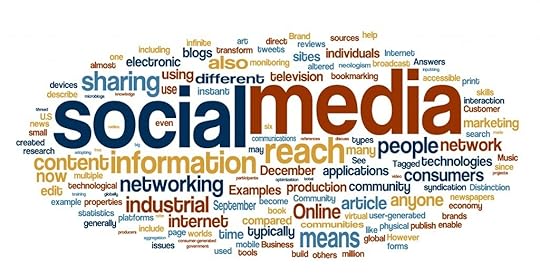 The firm recently published the third version of its “Social Media in the Workplace Global Study”. The first survey and research report was based on results from 2011.
The firm recently published the third version of its “Social Media in the Workplace Global Study”. The first survey and research report was based on results from 2011.
When a law firm begins surveying and analyzing social media, you know it’s going to be different. This isn’t your typical data that reports on number of users, number of comments or number of posts on internal collaboration and social platforms. The 2014 version is chock full of very interesting tidbits that you may want to pay attention to, including:
90% of companies now use social media for business purposes
Social media policies are now found in 80% of organizations, up from 60%
Only 17% of organizations have provisions that protect them against misuse of social media by ex-employees
36% of employers actively block access to such sites, compared to 29% in 2012
43% of businesses permit all of their employees to access social media sites, a fall of 10%
More companies are utilizing social media for business opportunities, which is a good thing, but it seems there is much more rigidity than in 2012 when it comes to policies and the blocking of sites. And for whatever reason, in 2012, 53% of employers permitted all their employees access to social media sites yet it’s down 10% in 2013. That’s alarming, if you ask me.
Another bombshell from the report came from the following:
In nearly all the jurisdictions, an employer is permitted to prohibit the use of social media sites during work, both on equipment provided by the employer and on the employee’s own devices
That’s right, apparently in all jurisdictions (other than the US) where Proskauer was conducting the research, country law dictates an employer can actually block social media sites on BYOD — Bring Your Own Device to Work — situations. So if I’m at work in Canada, and I’m using my own iPad on the company wifi, my employer has the right to block me from utilizing LinkedIn if they so chose. It doesn’t give the employer the right to monitor where I go, but they can block access to it.
It’s but one study, however, if the trend continues into 2014 — and through other research papers — I’ll become even more alarmed than I am at the present time. I would hate to see any more increases in the percentage of companies blocking access to external social media at work.
Has anyone banned the smoke break? Sure, you can’t smoke at your desk anymore (that’s a good thing) but people are still smoking outside or in designated smoking areas.
Shouldn’t we be thinking about social media the same way?
Shouldn’t we be educating workers on the better social media behaviours as opposed to simply turning it off or blocking access to it?
It seems to be a huge step backwards in the quest to create a more harmonious, open and collaborative workplace.
Dan's Related Posts:Should Companies Allow Facebook at Work?Social Media is not Social LearningThe Social C-SuiteCan Leaders Lead From the Side?Introducing the Digital Learning Quadrants
May 5, 2014
Take a Chance on You
 The early 1980’s saw me suffer through horrors of unimaginable proportions.
The early 1980’s saw me suffer through horrors of unimaginable proportions.
As an eight through twelve-year old boy, our family car was none other than the Ford Country Squire station wagon. Yes, it was a magic bucket of bolts on four sturdy wheels replete with … wait for it … fake exterior wood paneling.
The ignominy didn’t end there.
Inside the ‘woodie’ was an 8-track cassette player. I swear my parents only had money for one 8-track and – wouldn’t you know it – that one cassette was the greatest hits of ABBA.
As you can imagine, I heard the song “Take a Chance On Me” several million times.
Maybe that’s where my gumption comes from. It hurts to admit it, but maybe ABBA helped me become who I am today.
Are you afraid to take a chance?
Do you have the courage to try new things with your passions, with your career, with your life?
Does bravery emit from you as laughter does by children at a playground?
Michael Jordan once said:
I’ve missed more than 9000 shots in my career. I’ve lost almost 300 games. 26 times, I’ve been trusted to take the game winning shot and missed. I’ve failed over and over and over again in my life. And that is why I succeed.
(Nike Culture: The Sign of the Swoosh (1998), by Robert Goldman and Stephen Papson, p. 49)
 I thoroughly enjoyed watching Jordan play basketball. There was confidence. There was a bit of a swagger. There was leadership. But most of all, there was courage. He was willing to try. He was able to coach and mentor his teammates to try harder, to push for that extra inch of space. He always tried harder. He not only wanted the ball to take that last shot, he was comfortable knowing he might not make it.
I thoroughly enjoyed watching Jordan play basketball. There was confidence. There was a bit of a swagger. There was leadership. But most of all, there was courage. He was willing to try. He was able to coach and mentor his teammates to try harder, to push for that extra inch of space. He always tried harder. He not only wanted the ball to take that last shot, he was comfortable knowing he might not make it.
He even tried baseball with the entire world wondering, “What is he doing?”
That’s part of being brave. It’s an integral piece to the gumption puzzle.
For the past five years I’ve had the luxury of working with an amazing team – both directly and indirectly across the entirety of the organization I work for – and we all accomplished incredible feats. It’s been an incredible thrill; an honour to be part of something so transformative.
I could have begun to mail it in though.
I could have rested on the security of a past track record. I could have simply collected the paycheque.
I could have resisted the ball – the last shot – and said, “No, let’s keep passing it around to one another.” That’s safer. We’ll be ok.
I could have resisted shifting from being a basketball player to trying to become a baseball player.
But I would have been untrue to myself. I would have felt as though I was cheating. To me, the journey would have ended.
I’m not suggesting I’m perfect – by all means, I’m full of foibles – but one thing I learned long ago was that life should be treated as a journey, and that journey needs to be fueled by courage, bravery and gumption.
I don’t want to fail, but I’m absolutely comfortable in my own skin knowing that things might not work out.
I invested heavily in Blackberry, and … well that’s not going very well.
I once bought a condominium that was sold eight months later for less than what was originally paid.
I gave a presentation in the late 1990’s unrehearsed, unscripted and without PowerPoint slides to see if I’d be able to pull it off. It was mediocre at best.
I toured on bicycle throughout Tuscany in 2012 (with my better half) and didn’t use a map or strategize a touring plan before the trip began. There were innumerable moments where I thought we might divorce. This included the time where a decline of 20% grade on one of the many hills in the region saw a certain someone descending the road not riding her bike, but by walking it … in her socks.
She started talking to me again on the flight back to Vancouver a few days later.
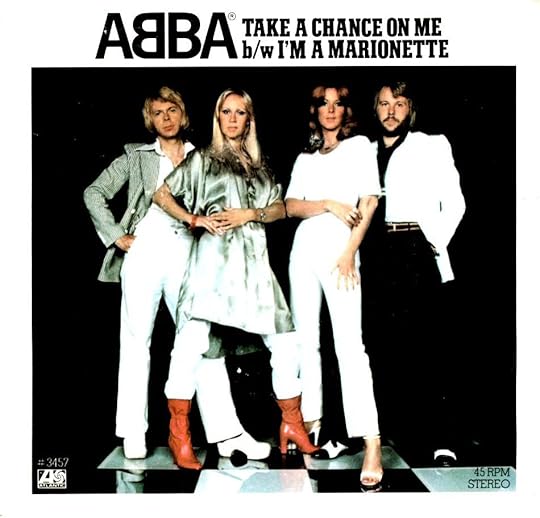 The examples above are failures. But I learned from those failures. Most importantly, I wasn’t afraid to try. I wasn’t pleased with the end result, but I learned and used it to my advantage in other situations.
The examples above are failures. But I learned from those failures. Most importantly, I wasn’t afraid to try. I wasn’t pleased with the end result, but I learned and used it to my advantage in other situations.
That job I just left? It was fantastic. It was as cool as the one I left in 2008. It was as cool as the one I left in 2002 and in 1998 too.
I have no idea if I’m going to be successful in this next role. But I have confidence in my ability and my prior experience should help me navigate through the forest of the unknown. We might call it needing to have a bit of ‘Forrest Gumption’. (nailed it)
I guess you could say I’m always willing to take a chance on me. Thank you ABBA. Thank you overly grotesque station wagon.
Which begs the question, do you “Take a Chance on You?”
Dan's Related Posts:Friday Fun: Meet Gump ShunLessons Learned From a First Time AuthorWhat I Learned From My Daughter About Decision MakingWe Are All BostonVirtual Worlds in an Organization are not a Time Waster (and other beefs)


